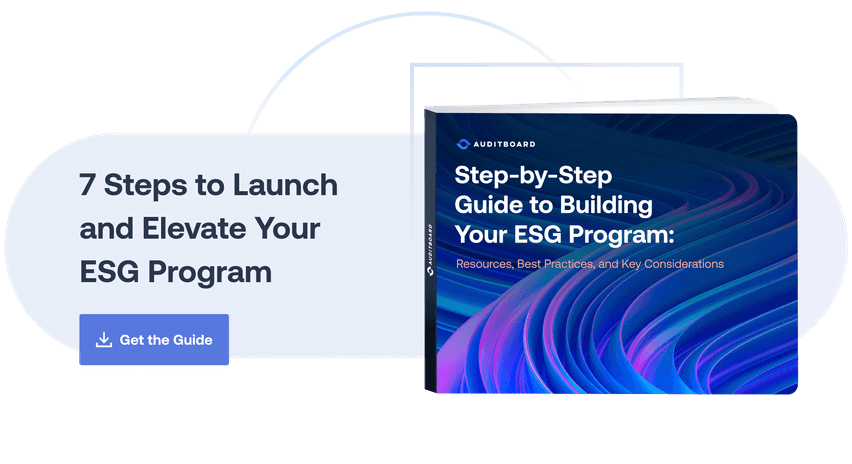
November 15, 2022 • 6 min read
ESG Reporting 101: Understanding ESG Frameworks and Ratings


Claire Feeney & Judson Aiken
The ESG landscape is experiencing a massive amount of consolidation, and guidance is evolving rapidly. As the IFRS Foundation’s International Sustainability Standards Board (ISSB) strives to integrate and standardize the different frameworks on a global level, the U.S. Securities and Exchange Commission (SEC) is reviewing comments on its proposed climate disclosures and the EU is gearing up to enforce the Corporate Sustainability Reporting Directive (CSRD). In sum, this momentum around ESG consolidation and regulatory action signals a clear shift from voluntary to required disclosures and assurance, and toward more rigor around sustainability claims and reporting.
As companies await final regulations and clearer guidance, however, most companies are either already reporting — more than 90% of S&P 500 companies issued sustainability reports in 2020 — or on a path to doing so. Whether you’re embarking on first-time ESG reporting or struggling to mature a program a few years along, it’s hard to know how to proceed. Which ESG frameworks and ratings are right for your business? Which metrics will have the most impact? AuditBoard’s ESG guide offers resources and guidance to help you make the right choices. Read on to understand the essentials of ESG frameworks and ratings, and download the full guide, Step-by-Step Guide to Building Your ESG Program: Resources, Best Practices, and Key Considerations.
ESG Reporting 101: Framework and Rating Basics
Historically, the ESG disclosure landscape has been a hard-to-decode alphabet soup, with a multitude of voluntary guidance and reporting frameworks and rating agencies offering their own overlapping — and sometimes conflicting — guidance. Below, we break down the basics.
What Are ESG Frameworks? How Do They Work?
- ESG frameworks are voluntary. As of October 2022, no regulations require companies to comply with specific ESG reporting frameworks. The many available frameworks are simply recommendations for standards and best practices that companies can elect to follow.
- Frameworks help to direct efforts and standardize reporting formats. Frameworks can help put parameters on ESG focus areas, support future progress tracking, and provide information to investors and other stakeholders in more consistent and familiar formats.
- Different frameworks have different focus areas. Certain frameworks focus primarily on greenhouse gas (GHG) emissions, others on the environment overall, and others on a wider ESG context. Some focus more on financial materiality, and others on societal impact.
- Frameworks can serve as starting points for many companies’ ESG reporting. In the first year of your program, it can be enough to simply report out on the recommended metrics for a given framework. Then, you can add metrics over time as your program matures and your stakeholders’ expectations change.
- You may want to leverage more than one framework or rating. Many organizations take this route, as it allows them to choose pieces from multiple frameworks that align with what’s important to their business while also satisfying stakeholders that prefer different frameworks or ratings.
What Are ESG Ratings? How Do They Work?
- Rating agencies assign their ratings based on voluntarily provided information. Companies proactively fill out ESG-focused questionnaires to earn ratings based on methodologies that are proprietary to each agency.
- Third-party aggregators base their ratings on companies’ publicly available data. Like rating agencies, aggregators award scores based on their own proprietary methodologies, but they do so automatically — without companies’ involvement.
- ESG ratings can be a starting point for reporting. Some organizations use rating agencies’ proprietary questionnaires as their starting point for which metrics to begin tracking. Data aggregators also publish guidance on what metrics are important to them.
- ESG ratings are generally treated with a reasonable degree of skepticism. Currently, rating agencies and aggregators provide little transparency in how different ESG areas are weighted or judged. Still, ratings are attractive to companies because — unlike frameworks, which simply guide reporting — they provide a score that can be improved upon.
Which ESG Frameworks Should I Start With?
Efforts are underway to consolidate frameworks, and the Task Force on Climate-Related Financial Disclosures (TCFD), Sustainability Accounting Standards Board (SASB), Global Reporting Initiative (GRI), Value Reporting Foundation (VRF), and Climate Disclosure Standards Board (CDSB) are formally committed. As the market awaits more consolidation, these organizations’ frameworks should be at the top of your list. For more detailed guidance on the different ESG frameworks and ratings, download the full guide, Step-by-Step Guide to Building Your ESG Program: Resources, Best Practices, and Key Considerations.
About the authors

Claire Feeney is a Senior Product Marketing Manager at AuditBoard focused on ESG and RiskOversight. In her role, she helps support organizations in transforming their enterprise risk management and sustainability programs. Prior to joining AuditBoard, Claire worked in product marketing at OneTrust, VMware, and Infor. Connect with Claire on LinkedIn.

Judson Aiken is a Senior Director of Risk and ESG Solutions driving strategic growth across AuditBoard’s enterprise risk management and ESG customer base, with an emphasis on product development. Prior to AuditBoard, Judson was at Ernst & Young in their Risk Advisory practice supporting enterprise risk management, SOX, and internal audit. Connect with Judson on LinkedIn.
You may also like to read


NIST CSF 2.0: What IT compliance managers need to know in 2025

Building resilience with IAM: Unifying access, risk, and compliance

ISO 27001 risk assessment: A practical guide for IT compliance managers

NIST CSF 2.0: What IT compliance managers need to know in 2025

Building resilience with IAM: Unifying access, risk, and compliance
Discover why industry leaders choose AuditBoard
SCHEDULE A DEMO




